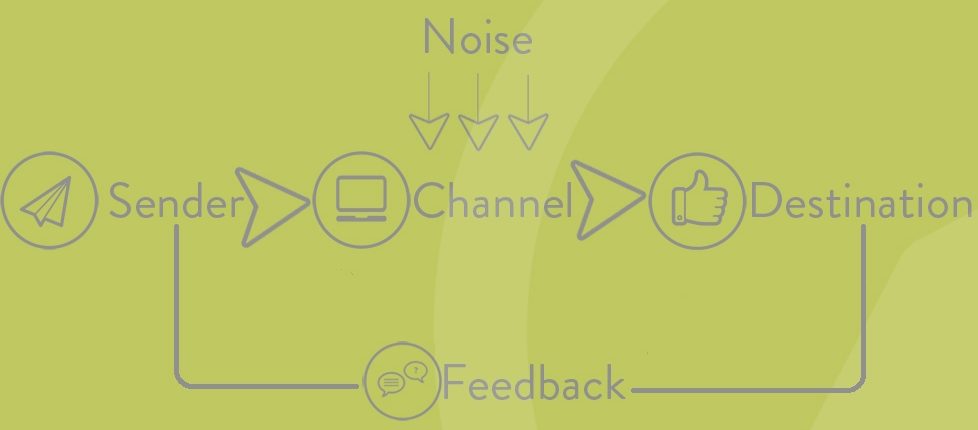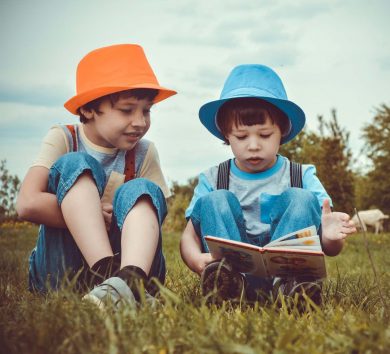Benefits of communication on the learning process
Communication with others is an essential part of every aspect of our entire life experience – our development, our personal lives, and in education. That’s why it’s important to teach children from an early age to communicate well, and for all of us to practice communicating with each other more effectively.
In this article, we’ll explore some of the ways in which the communication process – personal and professional – can affect our learning and teaching processes. Teaching is, at its core, communication, so building good soft skills is vital to the transfer of knowledge. Learning, on the other hand, involves listening and accepting information well.
What is communication?
In order to understand how to attain the most effective communication in the learning and teaching process, we’ll first explore the meaning of communication itself. We’ll do so using the simplified model and terms of Claude Shannon [1].

In the picture, we see a few components. The first one is the Sender, aka the information source – the person sending the message. If you’re the one teaching, you are the one sending the message and this is you.
The second one is the Channel. This is the physical system that is sending the signal or the message. What are you using to send the information? A picture or a film? A presentation? Are you talking and using body language? These mediums of communication are your channel, and you should use the best ones possible to transfer the information.
The Destination is the person receiving the message – student, child, partner. That is the one being taught (student) or the one in the process of learning. It is in the mutual interest of everyone involved in the process to get the best message possible.
Noise is the element which interferes with the communication, be it on the physical or psychological level. Noise impacts the message – changing it or erasing it. If you’re using video for teaching, maybe the quality isn’t the best, so the student’s learning process has been negatively impacted.
Maybe the student is from a different background and will translate the message into something different than the Sender intended. For example, in the field of STEM studies, stereotypes are the noise which distracts women from becoming involved in STEM careers.
Finally, Feedback is the process the communicators use to make sure the messages sent and received are as close in meaning to each other as is possible.
What communication means in the learning process
Whether you’re a teacher, an educator, or a parent helping your child with homework, your most important communication skill is the manner in which you present the material. For the child to understand and process a topic, it needs to be presented in an orderly fashion at a moderate pace. This gives the child time to hear and comprehend the material as it’s presented.
It’s important to remember is that communication is not only talking. Optimal communication always uses both verbal and visual communication tools. We don’t only mean using pictures and videos in class – although, this is always a good way to get the message across – but also non-verbal communication.
Your body language is a language in itself. The more dynamic it is, the better the effect. It’s been proven that educators who walk around and talk, and not just sit and read from the text, get better feedback from students. The best option is to combine dynamic, non-verbal presentation with expressive speech patterns, using repetition and emphasis in one’s voice to make important concepts stand out.
The key is finding the best possible way to communicate the message you want to get across. You’ll know if you’re doing a good job by getting feedback – it can be from the child themselves so the sender is confident they understood the message, or it can be from someone from outside, whom you asked to monitor your presentation and give you tips [2].
Effective communication in the learning environment
In order to have the message transmitted in the way you intended, you have to learn the most effective method of communication. This is a skill that can be learned and improved upon over time, and there are a few steps you can follow in order to practice and master it. In the teaching process, it’s incredibly important to send the message in the most effective and accurate way possible.
So, what counts as effective communication in the learning environment? No matter if it’s educator-student communication or communication between two students working on a project, what is needed for effective communication is the same [4]:
 Listening to others – In order for a two-way conversation to happen, one party must listen to what others have to say, processing information and understanding it
Listening to others – In order for a two-way conversation to happen, one party must listen to what others have to say, processing information and understanding it
 Maintaining eye contact with speakers – Eye contact not only helps to keep focus and heighten the feeling of personal conversation, but is vital for keeping the communication flow going.
Maintaining eye contact with speakers – Eye contact not only helps to keep focus and heighten the feeling of personal conversation, but is vital for keeping the communication flow going.

Seeking opinions from others – Getting feedback is one of the best ways to see if the information has really been understood in the best way possible. This is especially important if you want to see if your partner, student, or child understands the message as clearly as you intend it.
 Accepting ideas from others – This is vital, particularly if you’re working in a group – your partner’s ideas are as important as yours. Even educators need to remember this. Your student has ideas they can offer on how to make the learning process better. Be sure to listen to them and, if their idea is a good one, accept it.
Accepting ideas from others – This is vital, particularly if you’re working in a group – your partner’s ideas are as important as yours. Even educators need to remember this. Your student has ideas they can offer on how to make the learning process better. Be sure to listen to them and, if their idea is a good one, accept it.
 Clear explanations– Things should be explained in an understandable manner in every form of communication involved in the learning process.
Clear explanations– Things should be explained in an understandable manner in every form of communication involved in the learning process.
Why is mindful communication so important?
As teaching is basically communication, it’s important to incorporate all aspects of the communication process (seen on the scheme above) in an environment with as little distracting noise as possible. Also, the teaching/communication process will work best when you have good general communication rapport with a child or student.
For this to happen, the child must know you’re taking them seriously and that they can also tell you what they think and need. Power dynamics should be as felt as little as possible, so the communication can be open and frank. This also helps in getting good feedback from a child, in case the message isn’t getting across well.
In her Ted Talk, Kris Prochaska explains how to have good communication with children and why it’s important. She relates her real-life experience about how giving mindless answers to children gets no results, and doesn’t benefit anyone. On the contrary, when she explained reasonably to her child the options of when to do their homework – now, or at recess with the teacher – the child herself made the decision to do the homework. In this simple example, Prochaska shows how having a good, reasonable conversation with a child can benefit their school performance [5].
Child-child communication and gains for the learning process

Children communicating among themselves is very important for development.
Your communication as an educator is not the only communication process that the child can benefit from while learning. It’s been shown that children communicating with other children can enhance their success in school.
Children’s earliest communication is usually developed within the family. These first contacts become the model for the later ones they’ll pick up during their school days. It has been noted that during the preschool period, a child becomes increasingly focused on interaction with other children, learning what they say and do with more interest.
This is why, in this phase of development, children acquire their first ‘social status’ – learning how to adapt and integrate into a group. If a child has a communication problem during this stage, it’s likely they will develop an adaptation problem later on, which, naturally, will affect their personal life, as well as their education [3].
A child who is not at ease in their environment or with their friends will have a hard time focusing in school. Therefore, they will achieve less than desirable results. So, as you communicate with children, remember it’s also important for them to learn to communicate with each other as well. You might even need to give them some guidance in this area.
Developing critical thinking
Remember that when teaching a child, it is not only important to get the message across. It’s important to be there for the child generally, and help them develop many crucial life skills. That’s why understanding that collaborative learning improves critical thinking is so important [6].
Helping a child or a student develop critical thinking is one of the most useful things you can do for them. This way children can develop the skills necessary to judge on their own. They will judge about what is important, what is right or wrong, what is adequate, etc. This will help in their personal lives to judge what’s best for them and for their environment. It’s also a crucial skill to master so as to get the best out of their education. A child who can think critically can discern the important components of a text to learn, decide the best way to learn it, and accurately reproduce the knowledge they’ve gained. This is important in studying for a test, as well as later for a job or in life.
[1] https://www.businesstopia.net/communication/shannon-and-weaver-model-communication
[2] https://www.ncbi.nlm.nih.gov/pmc/articles/PMC1705977/
[3] Nærland, T. and Martinsen, H. 2011, Child–child interactions and positive social focus among preschool children. Early Child Development and Care, 181 (3): 361-370,
[4] Hurley, E. A, Allen, B. A. and Boykin, A. W. 2009. Culture and the Interaction of Student Ethnicity with Reward Structure in Group Learning. Cognition and Instruction. 27 (2): 121-146.
[5] How to Get Your Kids to Listen and Engage – Kris Prochaska
[6] Gokhale, A. A.1995. Collaborative Learning Enhances Critical Thinking. Journal of Technology Education. 7 (1): 22-31 .

